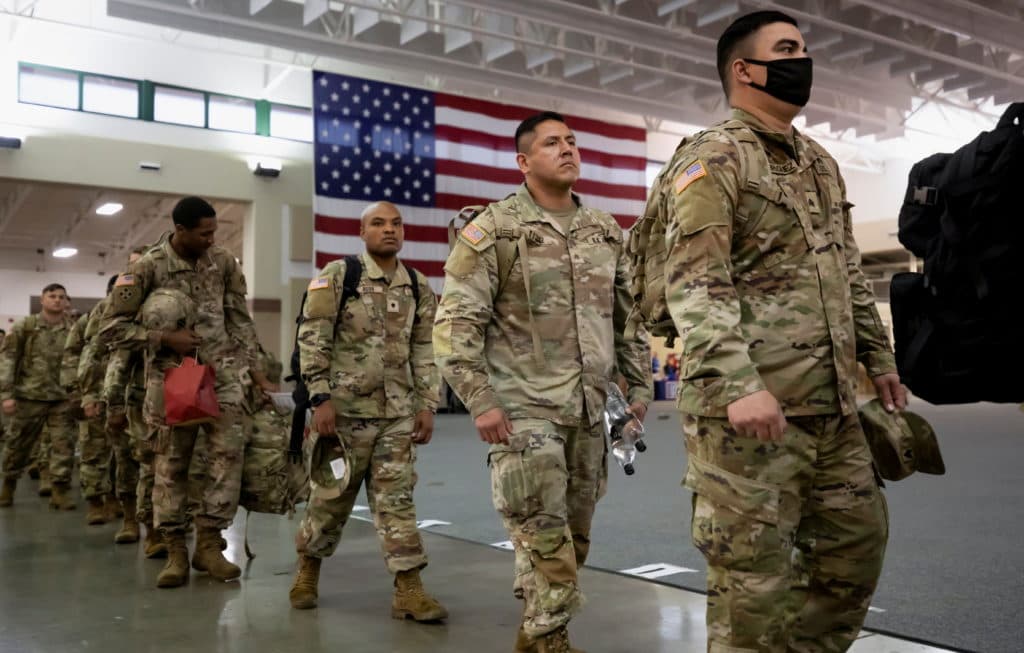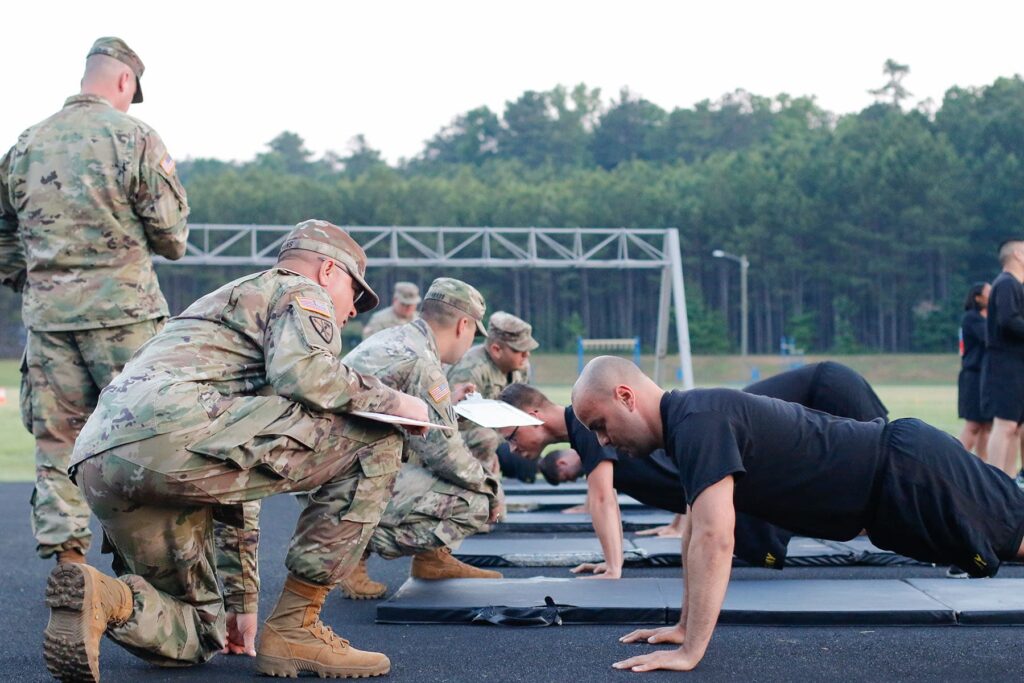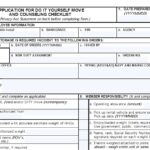Are you looking for a life of structure, community, and physical challenge? A career in the military could be the right choice for you.
To join the military, you must be at least 17 (age requirements vary by branch). You must also pass a medical exam and meet height and weight standards.
Take the ASVAB
Once you’ve spoken with a recruiter, your first step is to take the Armed Services Vocational Aptitude Battery, commonly called the ASVAB. Every branch of the military uses this test to determine if you’re eligible to join and which jobs your skills would best suit. You can take the ASVAB through your high school or by scheduling an appointment at a Military Entrance Processing Station (MEPS).
The ASVAB has 10 different sections. The composite scores from the arithmetic reasoning, word knowledge, paragraph comprehension, and mathematics knowledge are combined to form what’s called your Armed Forces Qualification Test, or AFQT. This score and your scores from the other ASVAB sections determine which military jobs you qualify for.
On the day of your ASVAB, be sure to arrive on time and bring proper identification. It’s important that you get plenty of rest before taking the test. It’s also not recommended that you use a calculator for the math sections of the test, as outside help is not allowed.
To prepare for the ASVAB, look into various websites that offer free practice tests. This will allow you to determine your strengths and weaknesses and will help you focus on areas where further study is needed. When you’re ready for the real thing, find a quiet place with comfortable seating and all of your test supplies including paper, pencils and a calculator.

Meet with a Recruiter
The Armed Services Vocational Aptitude Battery (ASVAB) helps you narrow down which branches and positions within the Army might be a good fit for you. You can also work with a recruiter to better understand which jobs and opportunities the branch you are interested in has to offer.
The recruiter can answer questions about benefits, training, and opportunities. If the recruiter has not already done so, you should bring in a list of questions. Some recruiters represent a single branch, while others work in joint recruiting centers. It is important to understand which branch the recruiter represents and to remember that he or she can only answer questions about the job duties, training, and opportunities of the branch he or she represents.
Meeting with a recruiter can be a little stressful. You should make sure that you are well-rested and have eaten a healthy meal before the interview. It is important to dress professionally and look your best. You should also avoid wearing clothing that might make you appear aggressive or unfriendly.
Once you are signed up for the Army, you must attend basic training. This tough and intense course will transform you physically and mentally into a soldier. You will learn about the Army’s values and traditions, how to care for your weapon, marksmanship, and security skills. Once you have successfully completed basic training, you will take the Oath of Enlistment and pledge to defend the Constitution of the United States throughout your military career.
Take the Oath of Enlistment
Once you have the required scores on your ASVAB and have talked with a recruiter, it’s time to take the Oath of Enlistment. This is a formal promise to defend the Constitution for the duration of your military career. If you’re entering as an officer, you’ll take the Military Oath of Office instead. In addition to this oath, all service members swear to obey lawful orders and not act against moral and ethical standards. Officers also have the authority to disobey unlawful orders under Article 90 of the Uniform Code of Military Justice.
You’ll also take a medical exam to make sure you are physically fit enough to join the military. Each branch has different physical requirements, and your recruiter can tell you the specific requirements for your chosen branch.
Almost all males in the United States who want to serve in the Armed Forces must register with Selective Service. There are some exceptions, however, for men who are either U.S. citizens or have a legal permanent resident status (green card). A high school diploma is a minimum requirement to enlist in the Army, although some services prefer applicants with a GED. It’s a good idea to talk with multiple recruiters because each service branch has its own unique requirements. You’ll also need to pass a basic training fitness test, which typically includes the Army Combat Fitness Test: a two-mile run, deadlift, standing power throw, push-ups, and sprint-drag-carry.

Go to Basic Training
Once you have completed all of the requirements, it is time to go to basic training. Your recruiter will take you to the Military Entrance Processing Station (MEPS) near you and get you started with the enlistment process. During this time, you will undergo a medical exam and be tested to see if you meet physical standards for the branch of service you want to join.
If you have any disqualifying issues, such as a criminal record or a serious health issue, the recruiter will help you navigate the waiver process. This is often a lengthy process, but overcoming some of these obstacles with enough persistence is possible.
After you are inprocessed, you will take the Oath of Enlistment and begin your journey to basic training (BCT). You will spend 7 to 12 weeks at a BCT location, depending on your chosen branch of service. In addition to learning your military occupational specialty, you will also learn the values and culture of the Army during this time.
If you are unsure if the Army is the right choice for you, consider talking with a friend or family member who has served before. There are also a number of websites that can provide you with information about life in the Military. Just be sure to research carefully, as not all websites are reputable.

